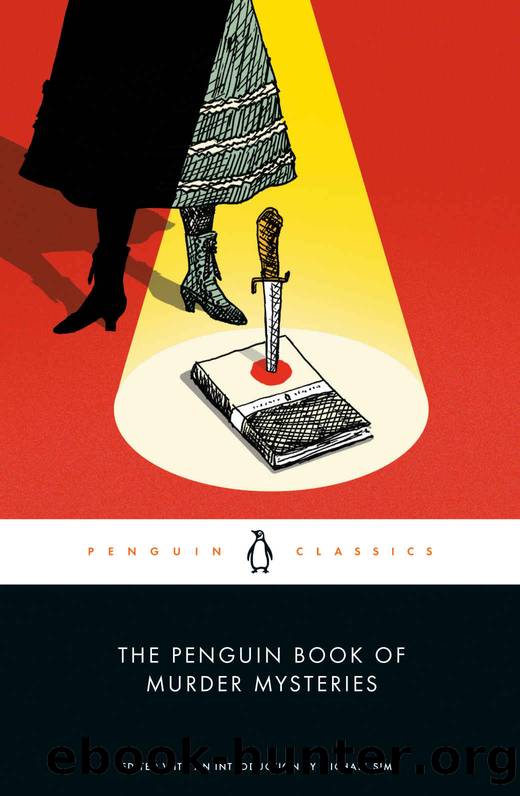The Penguin Book of Murder Mysteries by Michael Sims

Author:Michael Sims [Sims, Michael]
Language: eng
Format: epub
Tags: Mystery, Classics
ISBN: 9780143137535
Google: Dy2JEAAAQBAJ
Amazon: 0143137530
Goodreads: 74878687
Publisher: Penguin
Published: 2023-11-21T05:00:00+00:00
CHARLES W. CHESNUTT
(1858â1932)
âI think I must write a book,â Charles W. Chesnutt confided to his journal when he was twenty-two years old in 1880. âI am almost afraid to undertake a book so early and with so little experience in composition.â He undertook this dream with passionate energy, however, and soon acquired the experience he sought. When he died fifty-two years later, having lived from before the Civil War through the Harlem Renaissance, Chesnutt left behind a hugely influential legacy as a pioneer Black writer. He was celebrated as an author of works of fiction, who at the start of his career published regularly in New York literary magazines such as The Atlantic Monthly.
He began as many writers do, with short pieces for local periodicals, then trying those with an ever larger reach. Chesnuttâs career added books to his magazine work by the end of the nineteenth century, with publication of two volumes of short stories. His early stories resulted in interest from Houghton Mifflin, the respected Boston publishing house that had evolved from the firm of Ticknor and Fields, the first white-owned company to publish a book promoting the abolition of slavery. After rejecting a couple of Chesnuttâs novel manuscripts, Houghton Mifflin published The Conjure Woman in 1899, which blended the harsh daily reality of the postwar South with the magic and occult powers from African folklore. Later the same year Houghton Mifflin published Chesnuttâs second collection, The Wife of His Youth and Other Stories of the Color-Line. This same annus mirabilis saw publication of his biography of Frederick Douglass.
Chesnuttâs paternal grandmother had been enslaved, his grandfather her enslaver; his mother was from a similar racial mix but in what Chesnutt called a âfree mulattoâ family. He described himself as âseven-eighths white,â but that was enough to make him legally Blackâoctoroon, by the terminology of his eraâs racism. According to contemporary descriptions and photographs, he could have âpassedâ as white. He chose not to. Marriage between Black and white people had been illegal since the 1600s, but many white people accepted that the hidden rape of Black women was always part of slavery and remained common throughout Reconstruction and beyond. Thus Chesnutt returned often to the theme of miscegenation, with a clarity that drew fierce criticism from white supremacyâs eager deniers and defenders. But at the same time, the elegance and clarity of his writing drew serious literary attention. Not surprisingly, however, Chesnuttâs books did not sell well. Supporting himself as a stenographer, he kept writing.
He insisted upon writing about the horrors of lynching and other forms of terrorism employed against people of color, and about the systematic disenfranchisement resulting from the inequalities of segregation. His commitment to honest realism included careful attention to spoken language, including how Black characters spoke differently after education and exposure to the larger world and how those who could âpassâ for white learned to code-switch. As would Ralph Ellison and other writers later, Chesnutt also insisted upon historically accurate language as a reflection
Download
This site does not store any files on its server. We only index and link to content provided by other sites. Please contact the content providers to delete copyright contents if any and email us, we'll remove relevant links or contents immediately.
The Secret History by Donna Tartt(18751)
Shot Through the Hearth by Kate Carlisle(18631)
Who'd Have Thought by G Benson(16437)
The Betrayed by David Hosp(12581)
Red by Erica Spindler(12330)
Kathy Andrews Collection by Kathy Andrews(11678)
Scorched Eggs by Childs Laura(11257)
Thirteen Reasons Why by Jay Asher(8737)
(2T) A Bone to Pick by Harris Charlaine(7728)
Two Kinds of Truth by Michael Connelly(7365)
Small Great Things by Jodi Picoult(6867)
The Space Between by Michelle L. Teichman(6809)
The Thirst by Nesbo Jo(6759)
Pandemic (The Extinction Files Book 1) by A.G. Riddle(6409)
Heavenfield: A DCI Ryan Mystery (The DCI Ryan Mysteries Book 3) by LJ Ross(6315)
The Vegetarian by Han Kang(6185)
The Rosie Project by Graeme Simsion(6110)
Assassin’s Fate by Robin Hobb(6057)
Vow of Obedience by Veronica Black(5645)
